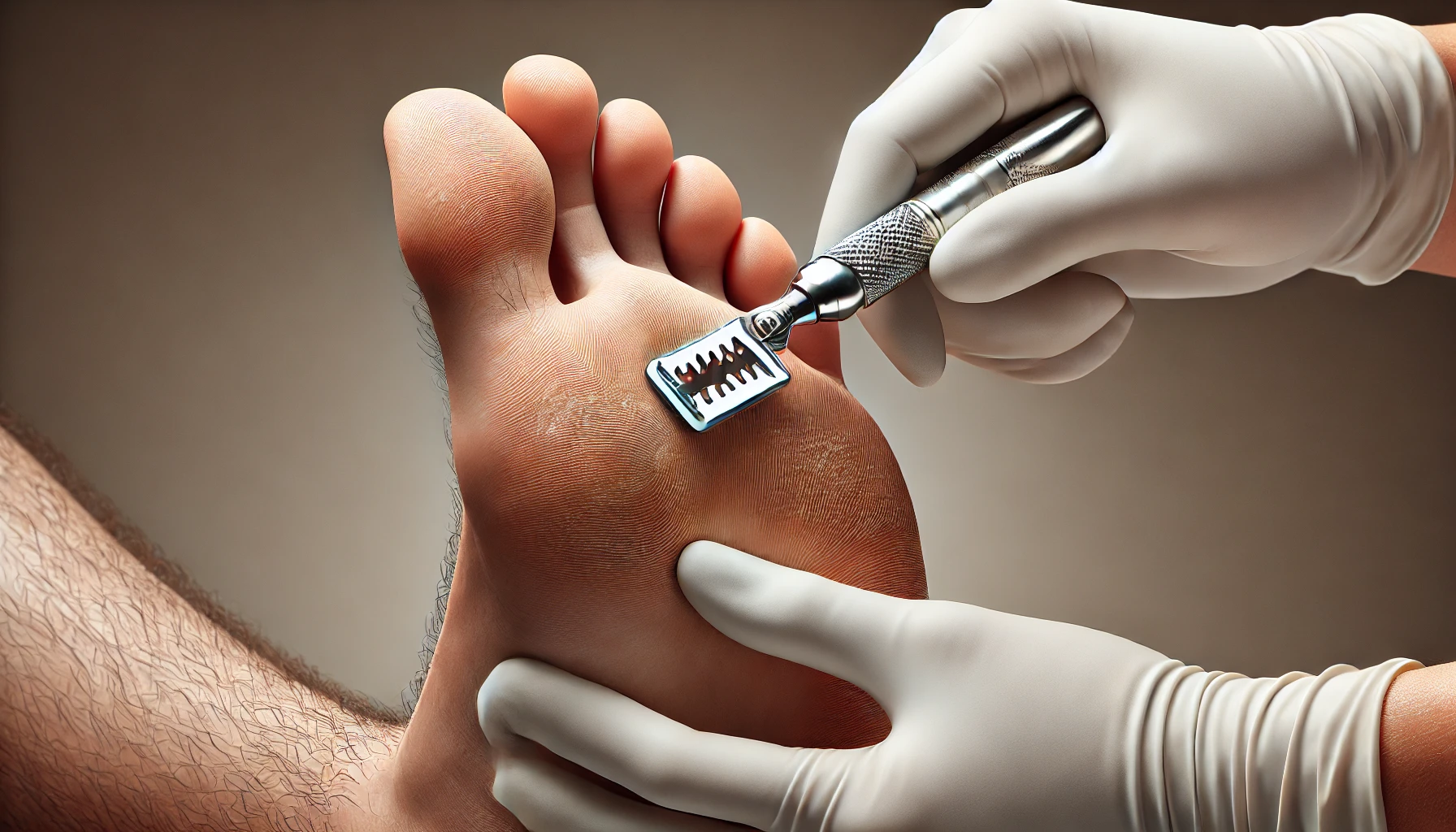This post was written with Consensus AI Academic Search Engine – please read our Disclaimer at the end of this article. Corns and calluses are common but manageable conditions that result from chronic pressure or friction on the skin. Proper diagnosis and treatment, along with preventive measures, can significantly reduce discomfort and prevent recurrence. By understanding the underlying causes and adopting appropriate management strategies, individuals can maintain healthy, pain-free feet.
Corns and calluses are common skin conditions that result from the body’s natural response to chronic pressure or friction. These thickened areas of skin can cause significant discomfort and pain if not properly managed. This article aims to provide a comprehensive overview of the causes, diagnosis, and treatment options for corns and calluses.
Causes
Corns and calluses develop due to hyperkeratosis, a process where the skin thickens in response to excessive pressure or friction. This can be caused by several factors, including:
- Poorly Fitting Shoes: Shoes that are too tight or have high heels can create pressure points on the feet, leading to the formation of corns and calluses1 6 8.
- Foot Deformities: Abnormal foot mechanics, such as bunions or hammertoes, can cause uneven pressure distribution, contributing to these skin conditions1 2 8.
- High Levels of Activity: Athletes and individuals who engage in repetitive physical activities are at a higher risk of developing corns and calluses due to the constant pressure and friction on their feet4 10.
Diagnosis
Diagnosing corns and calluses typically involves a thorough history and physical examination. Key diagnostic steps include:
- Visual Inspection: Corns and calluses are usually identified by their appearance. Corns are often small, round, and painful, while calluses are larger, less defined, and generally less painful3 6.
- Differentiation from Warts: It is essential to distinguish corns and calluses from plantar warts. This can be done by paring the lesion with a scalpel; warts will reveal soft, granular mounds of dermis, whereas corns and calluses will not3 7.
- Radiographs: In some cases, X-rays may be necessary to identify underlying bone deformities contributing to the condition2.
Prevention
Preventing the recurrence of corns and calluses involves addressing the factors that contribute to their formation:
- Proper Footwear: Wearing shoes that fit well, have low heels, and provide ample room for the toes can help prevent excessive pressure and friction1 3 6.
- Foot Care: Regular foot care, including moisturizing and using protective padding, can help maintain healthy skin and prevent the development of hyperkeratotic lesions3 6.
- Activity Modification: For athletes and individuals with high levels of physical activity, modifying training routines and using appropriate footwear can reduce the risk of developing corns and calluses4 10.
Disclaimer
The content presented in this blog is generated by Consensus, an AI-powered academic search engine, and is based on publicly available scientific literature. While every effort is made to provide accurate, up-to-date, and well-researched information, the content is intended for informational and educational purposes only. It does not constitute medical advice, diagnosis, or treatment. Always consult a qualified healthcare professional before making any decisions regarding medical conditions, treatments, or medications. The AI system’s analysis may not cover all perspectives, emerging research, or individual cases, and it is not a substitute for professional expertise. Neither the blog publisher nor the developers of the AI-powered search engine are responsible for any actions taken based on the information provided in this content. Use of this information is at your own risk. Citations to the original scientific studies are included for reference, but these studies should be reviewed in full and interpreted with the guidance of a healthcare or research professional.
If you are experiencing a medical emergency, please seek immediate attention from a healthcare provider.
